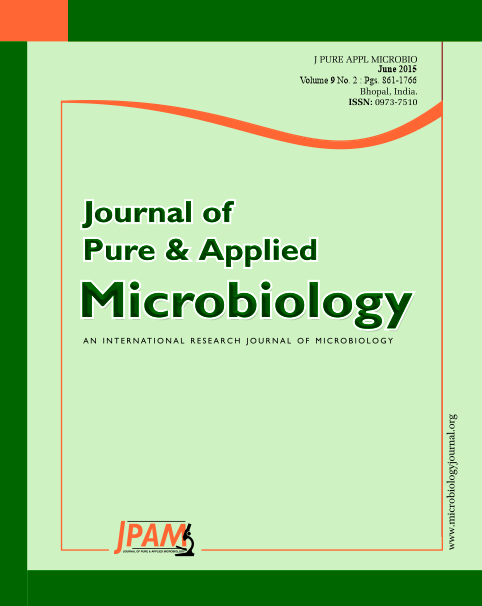Collar rot of groundnut (Arachis hypogaea L.) is caused by Aspergillus niger (A. niger). Ten different isolates of Pseudomonas fluorescens (Pf-1 to Pf-10) were screened for their biocontrol potential against the A. niger evaluated through their potential to produce the lytic enzymes during in-vitro antagonism. Among the ten isolates, Pf-3 exhibited highest in-vitro growth inhibition (78.88%) of A. niger followed by Pf-9 (64.52%) and Pf-5 (62.30%). The culture media containing Pf-3 isolates along with A. niger had higher activities of chitinase and β-1,3-glucanase and lower activities of cell wall degrading enzymes such as cellulase and polygalacturonase compared to the other tested isolates. A significant positive association (p = 0.05) between percentage growth inhibition of A. niger and specific activity of chitinase was observed where as no association could be established for β-1,3-glucanase. However a negative association was established between percentage growth inhibition of A. niger and specific activity of polygalacturonase and cellulase. From the findings of the present study, it may be concluded that Pf-3 could be the best biocontrol agent against A. niger, the collar rot causing pathogen in groundnut.
Growth inhibition, in-vitro antagonism, lytic enzymes, correlation
© The Author(s) 2015. Open Access. This article is distributed under the terms of the Creative Commons Attribution 4.0 International License which permits unrestricted use, sharing, distribution, and reproduction in any medium, provided you give appropriate credit to the original author(s) and the source, provide a link to the Creative Commons license, and indicate if changes were made.


